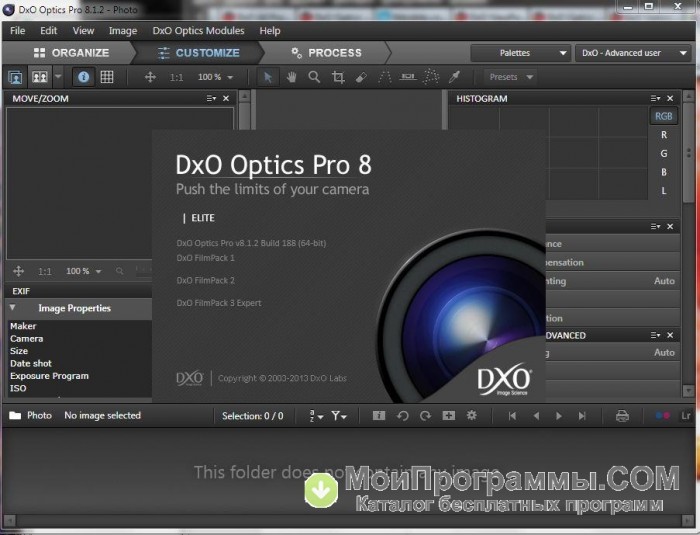
Lightroom 3 is pretty good but nowhere near. In terms of DAM features, Aperture 3 is king, with its seamless features, faces and geotagging support, light table and easy filtering.
#Dxo optics pro presets full#
Like Aperture, it aims to be a full DAM but after 4 years it still hasn’t convinced me. You can easily customize the interface to fit your own workflow, turn panels off, even customize the “nameplate” to your company name – a nice touch for when you’re working with a client. Lightroom has a simple and intuitive interface with parts that can be easily shown or hidden easily. Overall, I found this way overly convoluted.Īperture’s Full Screen mode is very slick but I found it a bit impractical with the panels on top of the image. Once added, a brick can also be enabled or disabled. The usefulness of this feature is a bit dubious except for some very specific cases and it may confuse newbies since some bricks, like the Noise, are not added by default. You can also edit images while in Light Table mode.ĭifferent adjustments (called ‘bricks’) can be added or removed and – very interestingly – multiple instances can be added on the same image. Also unique is the Light Table mode, an idea so simple yet so effective, which lets you arrange images – including variations of the same image – freely on a virtual table, drag them around, pan and zoom. For example, you can process any image while in browse mode. It manages to combine Library/DAM functionality with editing in a seamless way. Aperture 3Īs with any Apple software, Aperture 3 is polished to perfection. the ones designed just by the development team. Still, it’s easy to spot the leaders and the followers, the ones who employed usability tests vs. By looking at their previous version, one can see how they’ve copied one another. InterfaceĪll programs in this review have remarkably similar interfaces: dark/gray color schemes, tabs/stacks and sliders. So if you look at the images in the test and wonder why they’re not so good – it’s because I selected them to be like that. I believe that test images should not be perfect – how would I be able to check chromatic aberrations if the image was taken with a razor-sharp, $2000 lens? Or how could I evaluate highlight recovery for a perfectly-exposed scene? Or noise at low ISO? Also, I wanted flawed, challenging images. Some other RAWs from compact cameras were not readable by DxO and Capture One. My workflow is DNG-based but unfortunately DxO 6 and Bibble 5 don’t support DNG. One of the biggest challenges for this review was finding RAW images in my collection that would be readable in all five programs. I spent in total three weeks with the programs and the test images. If you wonder why it took so long, it’s because with each version, I take the time to become familiar with each application and explore its strengths and weaknesses. Following up on my previous articles, I am comparing the top 5 RAW converters to see which one is better for you.

#Dxo optics pro presets professional#
The competition is very fierce, with prices ranging from free to over $400, from quick apps aimed at casual users to professional tools. RAW processors are getting better with each generation, enabling photographers to produce and manage images of unparalleled quality.


 0 kommentar(er)
0 kommentar(er)
